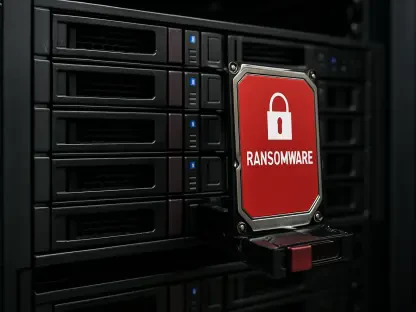In the dynamic sphere of software development, CI/CD pipelines are essential tools that enable organizations to implement consistent and rapid deployment of code changes. However, these pipelines also bring with them a gamut of security challenges, particularly the risk of sensitive information leakage through environment variables. The transition to cloud environments, coupled with a reliance on automated deployment processes, has amplified the need for meticulous management of secrets. Such secrets—API keys, passwords, tokens—need stringent protection, and any negligence can result in dire security breaches.The stakes are high: a single misstep in managing environment variables can cascade into a major data crisis. Now, more than ever, developers and security teams need to collaborate closely, strengthening the protective measures around CI/CD pipelines to ensure the confidentiality and integrity of sensitive data throughout their lifecycle.
The Perils of Inadequate Secret Management in CI/CD
The handling of sensitive information within CI/CD environments requires vigilance and deliberate security practices. When secrets such as credentials and tokens are embedded in environment variables without adequate safeguards, they stand vulnerable to exploitation by cyber adversaries. The consequences of such mismanagement are far-reaching and can include unauthorized system access and devastating data breaches.Security specialists point to a pattern of poor practices that contribute to such leaks: for instance, sensitive details getting logged in plain text or inadvertently printed during debugging sessions. These practices, often a result of the rush to deploy applications quickly, are a boon for malicious entities seeking to exploit weak points in an organization’s infrastructure. By underlining these pitfalls, industry experts are calling for a shift in mindset—from a reactive to a proactive orchestration of security measures within the CI/CD process.
Bridging the Gap: Integrating Security and Development
The once clear-cut divisions between development, operations, and security teams have evolved into a recognition that these areas are more interconnected than ever before. Gone are the days when a siloed approach was feasible—or even advisable—in managing CI/CD pipelines. As complexities in pipeline security mount, a collaborative strategy becomes imperative.Leaders in cybersecurity are advocating for an integrated model where development, operations, and security teams work in unison from the inception of the CI/CD process. Through such collaboration, each stage of software deployment is scrutinized for vulnerabilities, strengthening the overall defense of the pipeline. This shift encourages the implementation of security measures early on, effectively reducing the likelihood of a data breach due to secret leakage.
Identifying and Addressing Common Sources of Leaks
A myriad of factors contribute to the inadvertent exposure of secrets in CI/CD pipelines. Misconfigured settings, lack of robust access controls, and lax secret management practices are often the culprits behind these leaks. Additionally, tools designed to manage secrets, such as .gitignore files, can be prone to misuse, leading to the inadvertent exposure of sensitive information—a phenomenon known as ‘secrets sprawl.’To counter these threats, organizations must diligently revise configurations, employ secret management solutions, and educate their teams on the importance of protecting sensitive data. As companies tailor their scripts and settings to guard against leaks, they exponentially reduce the risk of their critical data falling into unauthorized hands, safeguarding their operations and reputation.
Improving Cloud Providers’ Security Features
Cloud service providers play a quintessential role in reinforcing the security of CI/CD pipelines. By setting secure defaults in their command-line interfaces (CLIs) and software development kits (SDKs), promoting the use of temporary credentials, and providing guidance on best practices, providers have the power to steer users towards more secure workflows.Yet, the onus of security does not lie solely with these providers. Users are ultimately responsible for properly configuring cloud services and managing sensitive data. Vigilance and adherence to best practices remain key to leveraging the security potential of cloud services, ensuring that CI/CD pipelines remain shielded from risks associated with secret management.
Proactive Measures and Best Practices
Proactive measures and the adoption of best practices are essential to safeguard CI/CD pipelines against leaks of sensitive secrets. Here’s what can be done:– Utilize dedicated secret management tools that provide automation for handling secrets without exposing them in configuration files or code.– Establish policies and procedures for regular audits of secrets to ensure they haven’t been exposed or compromised.– Implement least privilege principles to ensure that access to secrets is given to only those who need it and only for the time they need it.– Rotate secrets frequently to minimize the risk of them being compromised over time.– Secure your build servers and restrict access to ensure that only trusted parties have access to the CI/CD environment.– Continuously monitor for anomalies and set up alerting systems to detect potential unauthorized access or suspicious activities within the pipeline.By taking these proactive measures, organizations can maintain the integrity of their CI/CD pipelines, protect sensitive data, and significantly reduce the vulnerability to security threats.









